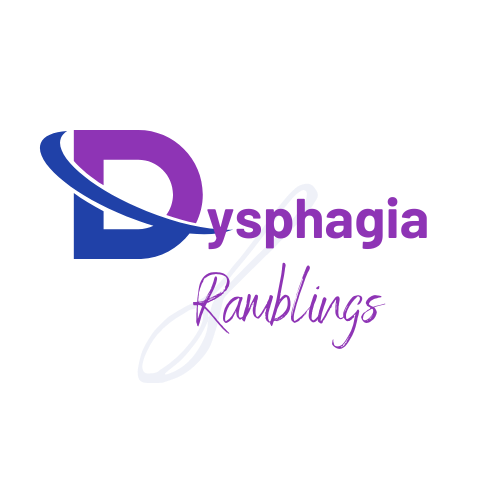
Research
Research by Dr. Lazarus and Dr. Robbins has focused heavily on lingual strengthening. Many of these research articles have proven to us that lingual strengthening using resistance such as an IOPI does increase not only tongue strength and at times, tongue mass, but also improves the overall swallow. This same research has also shown us that using a tongue depressor can be just as effective as a more expensive device.
The tongue is often called the driving force in the swallow.
Exercise
One type of exercise we discuss in dysphagia is an isometric exercise. Isometric is a sustained movement. Wikipedia:
- “Isometric exercise, a form of resistance exercise in which one’s muscles are used in opposition with other muscle groups, to increase strength, for bodybuilding, physical fitness, or strength training.”
Another study (Juan et al) looked at a single patient. A 56 year old female, 27 months s/p CVA. This patient had undergone behavioral interventions (“swallow-specific maneuvers (eg, supraglottic swallow), swallowing sensory stimulation/enhancement (eg, thermal stimulation), postural strategies (eg, head turn), and dietary modification”), UES dilatations and G-Tube with expectoration of saliva. She also had outpatient services including, as the authors state “traditional dysphagia therapy and an intensive, daily home practice program including swallowing-specific maneuvers (eg, Mendelsohn), range of movement exercises, and electrical stimulation (E-stim) during saliva swallowing tasks.”
Following traditional therapy: Video Fluorscopic Swallow Study (VFSS) was completed to see the anatomy and physiology of the swallow, looking at 12 swallows and 4 bolus consistencies. Patient was observed with liquid pooling on the vocal folds, liquid pooling in the pyriform sinus, minimal right-sided UES opening, aspiration of liquids and decreased lingual strength as measured by the IOPI.
The patient then was introduced to 8 weeks of I-PRO Therapy with a focus on the anterior and posterior tongue, followed by 5 weeks of detraining and 9 weeks of I-PRO maintenance with decreased frequency.
During the 8 weeks of I-PRO, the patient completed 10 lingual press exercises (anterior and posterior portions of the tongue) 3x/day, 3 days/week.
Detraining included 5 weeks of no lingual strengthening. After the detraining session, patient was found to have decreased isometric pressure with reduced UES oepning.
A 9 week program of I-PRO Therapy followed the detraining, which included a less intense I-PRO program. After the maintance program, anterior lingual pressure returned to the same level that it was after the 8 weeks of intervention.
The nice thing about these more expensive devices, such as the Iowa Oral Performance Instrument, or IOPI is that they allow visual representation of strength, but also allows you to visually set a goal for your patient. The IOPI is a box that is attached to a tongue bulb. The bulb is pushed between the tongue and the palate, the cheeks and the teeth or the lips and the teeth. It gives you a visual line showing the amount of effort exerted with a number representation. This not only allows you to track where the patient functions during that session, giving you measurable outcomes to report to insurance, but it also allows you to set a goal for your patient to try to beat.
The creator of TheraSip, those wonderful micro resistant straws I recently blogged about, has created a device called the Tongue Press. It does not have a fancy computer with it to track or collect data regarding your patient’s strength or progress. This is a very simple device with 2 clear plastic tubes which can be filled with water, with a red level in the top tube with bulbs on both ends. After the device is set per instructions (included with the device) the patient puts the tongue bulb between the tongue/palate, lips/teeth or cheek/teeth and squeezes. Strength can be measured by movement of the red level. The nice part of this device…..it costs a mere $20.
While the computers are always nice to have and very functional, if you don’t have $1000-$2000 to spend on a device, you can always use tongue depressors for lingual strengthening or the Tongue Press.
Remember
The main thing we need to remember is to utilize evidence based practice in our therapy. There is plenty of evidence base regarding lingual strengthening that we can incorporate into our therapy.
References:
Lazarus, C. Logemann, J.A., Huang, C.F. and Rademaker, A.W. (2003). Effects of two types of tongue strengthening exercises in young normals. Folia Phoniatrica et Logopaedica, 55, 199-205.
Robbins, J.A., Gangnon, R.F., Theis, S.M., Kays, S.A., Hewitt, A.L., and Hind, J.A. (2005). The effects of lingual exercise on swallowing in older adults. Journal of the American Geriatric Society, 53, 1483-1489.
Robbins, J.A. (2003, March). Oral strengthening and swallowing outcomes. Perspectives on Swallowing and Swallowing Disorders, 12, 16-19.
Juan J, Hind J, Jones C, McCulloch T, Gangnon R, Robbins J. Case Study: Application of Isometric Progressive Resistance Oropharyngeal Therapy Using the Madison Oral Strengthening Therapeutic Device. Top Stroke Rehabil. 2013 Sep-Oct;20(5):450-70. doi: 10.1310/tsr2005-450

Oh how i wish you had put this up 7 years back. my dad suffered a haemorrhagic stroke at the age of 77. I could’ve helped him get back his swallowing thereby imparting some quality of life.